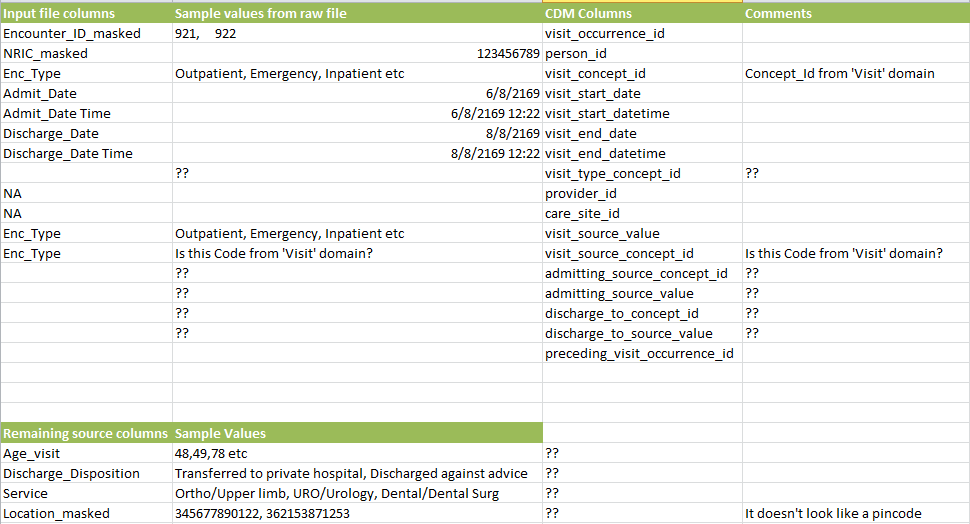Hello Everyone,
Can you please help me with the mapping for Visit_Occurence Table? The below are the list of columns that I have from raw data file and they have to be converted to OMOP CDM format for visit_occurence table. Though I was able to find some relevant matches, I am stuck with rest of the columns. Please help
Can you please confirm as to whether I have correctly mapped and how can I map the ‘remaining source columns’ shown in screenshot above to OMOP CDM format?
Please note that Athena returns 0 results under ‘place of service’ class for values like ‘Discharged against advice’. Transferred to Nursing’ etc. However, I am able to find some matches in ‘Pt dis status’, should I follow that? But the CDM convention is to follow the ‘Place of service’ class for the field discussed above
Thanks
Selva

